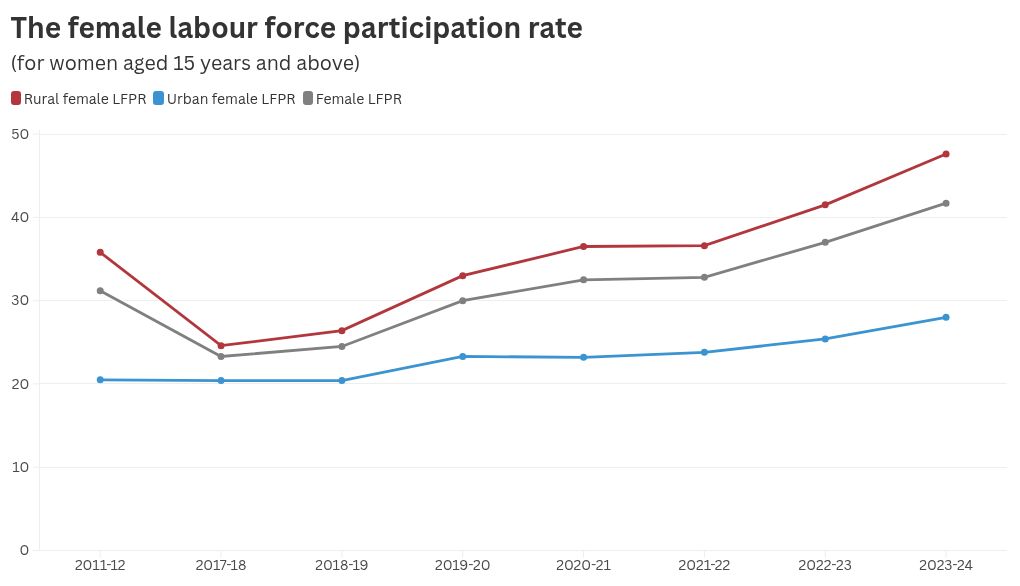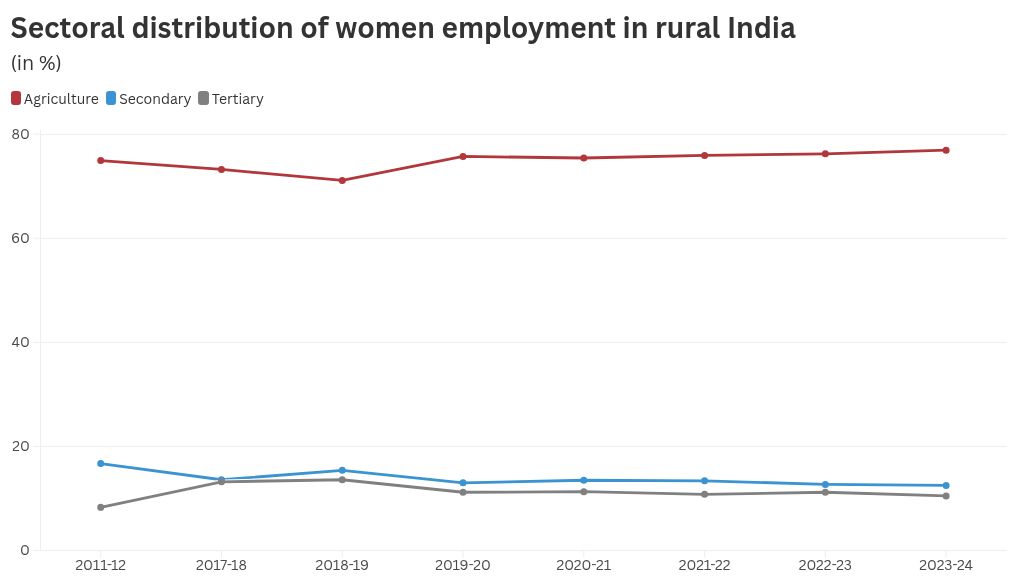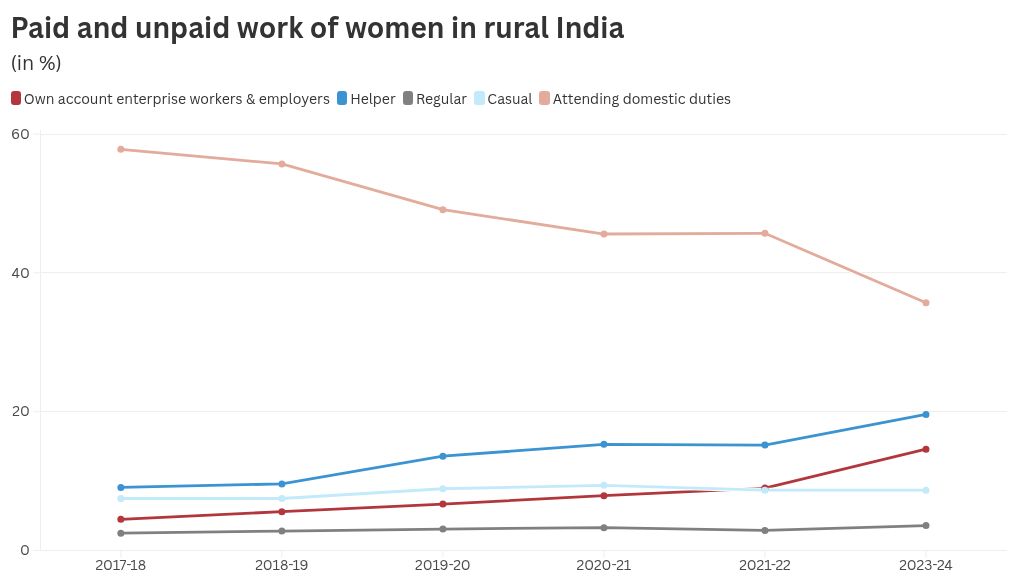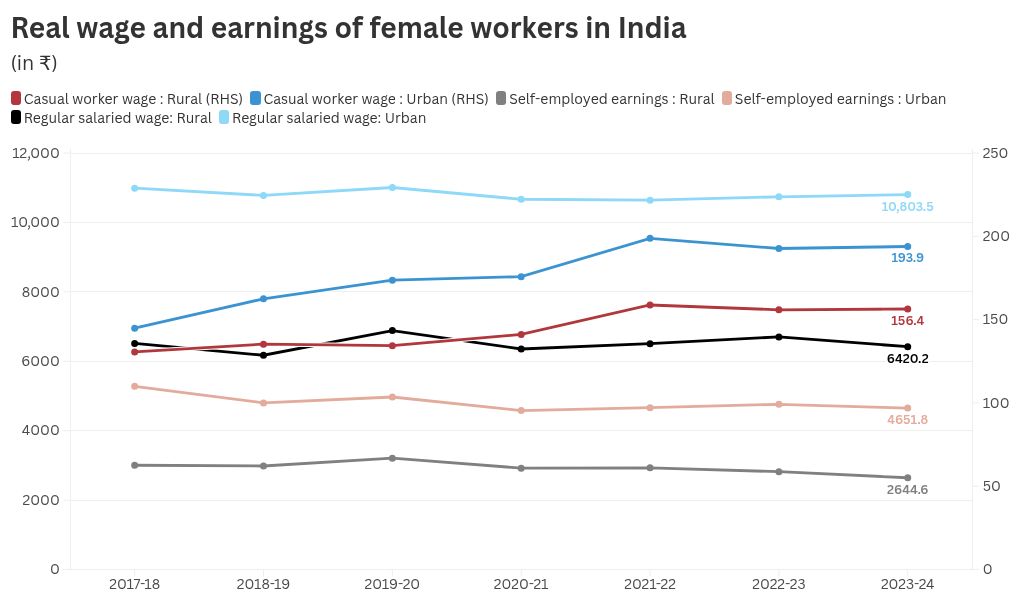
A large share of women’s work takes the form of unpaid household labour, which does not count as employment in official statistics
| Photo Credit: M A SRIRAM
The female labour force participation rate (FLFPR) measures the share of women who are either employed or actively seeking work. A higher FLFPR is often seen as a sign of greater gender equality and a more dynamic labour market. The FLFPR fell from 31.2% in 2011-12 to 23.3% in 2017-18, before climbing to 41.7% in 2023-24. While this rise appears encouraging, a closer look reveals that women continue to face barriers — both in terms of earnings and the kind of jobs available to them.
In India, workers are broadly classified into three categories: self-employed, regular salaried, and casual workers. The NSSO tracks earnings for each of these groups. Strikingly, during the very period when the FLFPR rose, real earnings declined for all categories except casual workers in both rural and urban areas. This points to a troubling reality — more women may be entering the workforce, but they are not finding secure or remunerative employment.
The recent rise in FLFPR is largely driven by rural women. To understand this trend better, we now turn to a closer examination of female labour force participation and employment patterns in rural India.
Economic development is typically associated with a shift of the workforce from agriculture to non-agricultural sectors. Given the recent rise in rural FLFPR, one might expect more women to be moving out of agriculture into industry or services. The data, however, suggest the opposite. The share of rural women employed in agriculture rose from 71.1% in 2018-19 to 76.9% in 2023-24, while their presence in both the secondary and tertiary sectors declined.
A large share of women’s work takes the form of unpaid household labour, which does not count as employment in official statistics. Even within the employed category, there exists a group termed ‘helpers in household enterprises’ — a role that also falls under unpaid family work. So, two categories capture women attending to domestic duties, both of which are unpaid activities.
Among rural women aged 15 years and above, there has been a sharp fall in those reporting ‘domestic duties’ — from 57.8% in 2017-18 to 35.7% in 2023-24 (nearly 20 percentage points). This shift is mirrored by a 10.5 point rise in women counted as ‘helpers in household enterprises’ (from 9.1% to 19.6%) and a 10 point rise in ‘own account workers and employers’ (from 4.5% to 14.6%) over the same period. In other words, the reduction in unpaid domestic work has translated largely into self-employment, not into an expansion of wage employment.
In rural areas, it is often difficult — if not impossible — to separate women’s domestic responsibilities from their role as helpers in household enterprises. This blurring of boundaries may partly explain the rise in FLFPR. It also raises a fundamental question: should such unpaid helper roles be counted as employment at all? At the same time, even within the self-employed category, the apparent increase in own account workers and employers has coincided with a decline in their real earnings. In other words, the rise in self-employment has not improved women’s incomes.
Thus, the rise in FLFPR is largely driven by an increase in women counted as helpers in household enterprises and as self-employed workers. Wage employment has not expanded, and real earnings for most categories of women workers have actually fallen. Far from signalling dynamism, this pattern points to deeper vulnerabilities in the labour market.
Source: Periodic labour force survey (PLFS) and National Sample Survey Office (NSSO)
Subhanil Chowdhary is an associate professor of Economics at St. Xaviers University, Kolkata. Anushree Gupta is an MA student in Department of Economics, St. Xavier’s University, Kolkata
Published – October 04, 2025 07:00 pm IST



